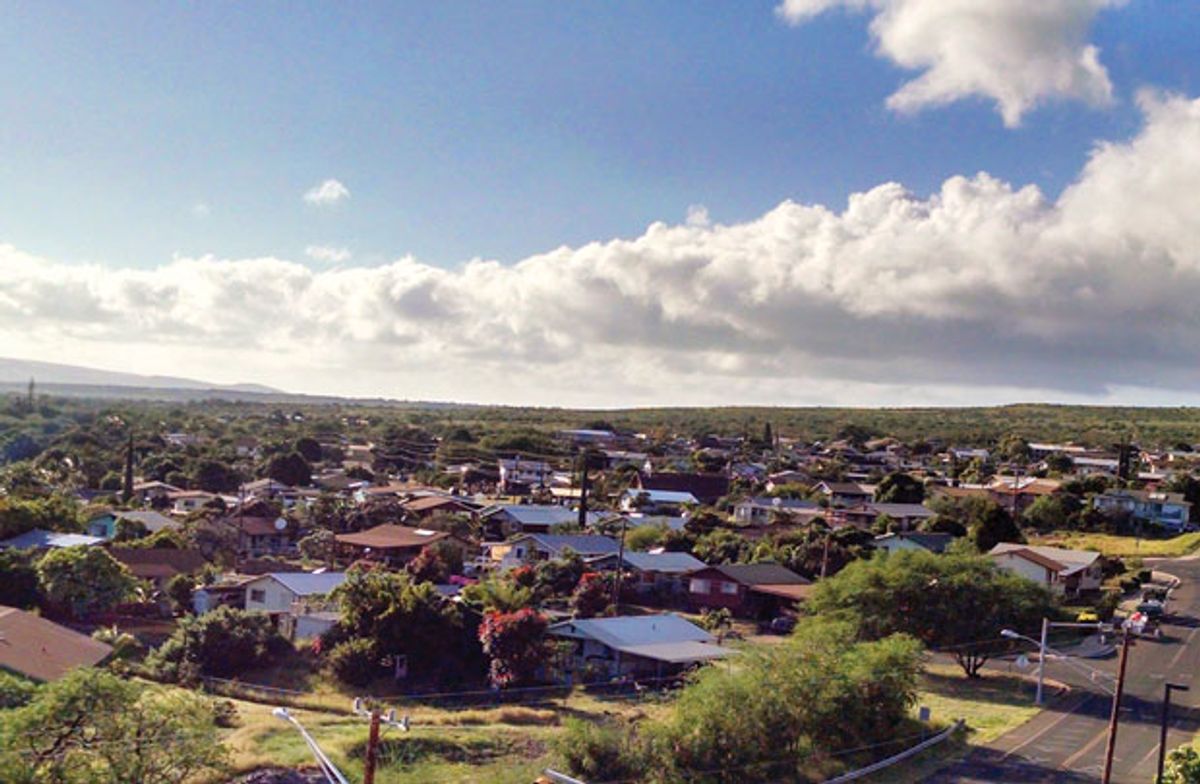In June, energy experts were clashingin both tweets and peer-reviewed journals over the feasibility of the United States achieving a 100-percent-renewable power grid in 2050. Many governments, utilities, and big consumers, however, appear unwilling to wait for the engineers’ all clear: An increasing number of jurisdictions and institutions are setting deadlines for a jump to a 100-percent-renewable electricity grid or even beyond, to fossil-fuel-free heating and roadways as well.
The impetus for this all-renewables movement is the increasingly clear danger posed by climate change. Scientists and policy experts warn that global greenhouse gas emissions—currently plateaued at 41 metric gigatons of carbon dioxide per year—must start dropping within just a few years. If they do not, the global warming limit settled upon in the Paris Agreement in 2015 will “become almost unattainable,” according to recent commentary in the journal Nature.
“With no time to wait, all countries should adopt plans for achieving 100 percent renewable electricity production,” urges the opinion piece, signed by Christiana Figueres, the diplomat who led the Paris talks, and five directors of leading climate research groups.
Officially, many government and utility decarbonization plans also allow nonrenewable options such as nuclear power and coal-fired power plants, which capture and bury their carbon dioxide, a process known as sequestration. But both nuclear energy and carbon sequestration are unpopular in many countries and have recently shown to be risky bets. Blown budgets for new reactors in Georgia and South Carolina pushed Westinghouse Electric Co. into bankruptcy in March, and a decade of work on a carbon-capture coal plant in Mississippi has saddled Atlanta-based utility Southern Co. with a potential US $3.4 billion loss. Southern announced in June that its plant in Kemper, Miss., will burn natural gas instead of coal and vent all of its CO2.
“I learned…that we could deeply decarbonize DTE Energy and we could do it in a way that’s affordable. And to be honest, it didn’t take esoteric technology assumptions” —Gerry Anderson, DTE Energy
In the United States, all-renewable goals appear, ironically, to be gaining popularity since the election of fossil-fuel-friendly President Donald Trump. Since Trump took office in January, for example, the bipartisan U.S. Conference of Mayors called for cities to be “powering their communities with 100 percent clean, renewable energy by 2035.”
California’s Senate voted to mandate a totally renewable grid by 2045. (The state already has a 50-percent-renewable power mandate on the books for 2030.) In 2015, Hawaii became the first U.S. state to set a renewable-grid deadline, and now the primary utility has vowed to beat it. In December, Hawaiian Electric Industries forecast that the island of Molokai would be all-renewable in 2020, and that the rest of the utility’s island grids would get there by 2040—five years ahead of the state mandate.
Renewable energy growth is bolstered globally by continued cost declines and by corporate purchasing. As of July, 102 multinational corporations had joined the RE100 effort, setting individual deadlines to source only renewable electricity. Members include Belgium-based brewer Anheuser-Busch InBev, General Motors, Google, and food and personal products giant Unilever, based in the United Kingdom.
Among the most ambitious national targets are those of Denmark, which aims for all-renewable electricity and heating by 2035 and zero fossil energy by 2050. The country is well on the way to reaching those goals. As of March 2017, renewables provided about 56 percent of Denmark’s power, and that share will rise to about 72 percent in 2020, according to the Danish Energy Agency. That’s up from 33 percent in 2010.
The country’s grid operator, Energinet.dk, has proven adept at handling high levels of variable wind power, largely through steady expansion of transmission links to its neighbors. During one peak in July 2015, Denmark’s wind farms were generating over 40 percent more than domestic demand and exporting their surplus to Norway, Sweden, and Germany, according to Energinet.dk data.
Experience such as Denmark’s, plus a growing number of simulations building on pathbreaking optimization modeling by German energy consultant Gregor Czisch, are increasing European confidence in the manageability of fluctuating wind and solar power. Following consultations with energy experts from around the world, in April the annual REN21 Renewables Global Futures Report concluded, “European experts saw clear possibilities for a transition towards 100 percent renewables by 2050, and no one expressed serious doubts about the technical feasibility of doing so.”
In the United States, fellow academics attacked Stanford University’s Mark Jacobson, revealing that many still consider it unproven that a grid without fossil fuel or nuclear power plants can meet demand 365 days a year. Still, even some of Jacobson’s critics bet that renewables can do most of the heavy lifting, eliminating over 80 percent of the U.S. power sector’s carbon pollution. And more solutions are likely to develop along the way. Harvard applied physicist David Keith (who was not among Jacobson’s detractors) says the worrying about how to squelch any leftover emissions in 2050 is “premature.”
Even some previously skeptical utility bosses are coming around to the idea of a grid that’s dominated by wind and solar. In 2015, Detroit-based DTE Energy Co.’s CEO Gerry Anderson said the coal shutdowns required by President Barack Obama’s Clean Power Plan “border[ed] on unachievable.” Two years later the Trump administration is trying to dismantle Obama’s plan, but DTE has committed to shuttering all of its coal plants by 2040.
DTE’s plan is to replace the energy—61 percent of DTE’s power supply in 2016—with a mix of wind, solar, and gas-fired power. While preparing to comply with the Obama administration’s mandate, Anderson discovered that the company could pull it off pretty easily. In a mea culpa to fellow executives, he explained, “I learned…that we could deeply decarbonize DTE Energy and we could do it in a way that’s affordable. And to be honest, it didn’t take esoteric technology assumptions.”
This article appears in the September 2017 print issue as “Customers Seek 100-Percent-Renewable Grids.”
